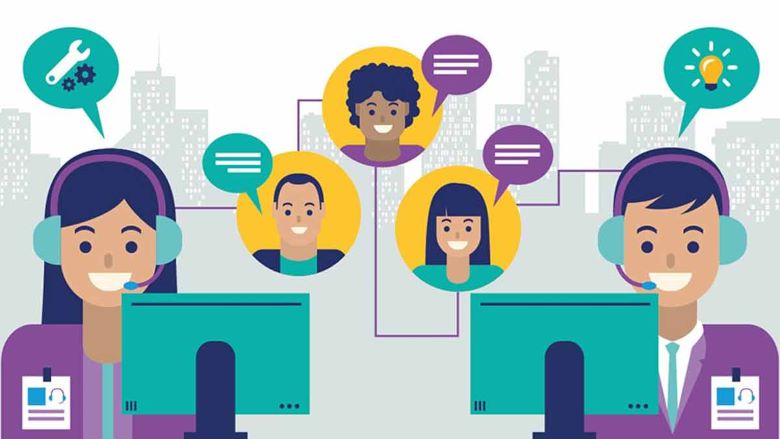
Customer service stands as a significant factor influencing brand reputation, customer loyalty, and ultimately, revenue generation. As businesses navigate through the intricacies of consumer demands and market competition, leveraging technology becomes imperative to streamline and enhance customer service delivery. In this comprehensive guide, we delve into the profound impact of technology on customer service and outline four key ways it can revolutionize your customer support strategies.
What is Customer Service Technology?
Customer service technology streamlines support processes, aiding in gathering, organizing, responding to, and reporting on customer inquiries. It integrates various communication channels like chat, self-service, messaging, and email, alongside external tools such as group chats and social media. Employing reliable customer service software enhances workflow efficiencies and simplifies addressing customer queries.
The Four Pillars of Customer Service Technology
- Help Desk & Shared Inbox: Integrating a help desk system into your shared inbox streamlines customer service, enhancing team collaboration and workflow efficiency. Automate query handling, task delegation, and access key consumer information in real time.
- Chat & Messaging Systems: Live chat fosters personalized customer communication, building trust through direct engagement. Unlike static FAQ pages, live chat offers significant support enhancements, empowering customers with immediate assistance.
- Customer Relationship Management (CRM): Essential for customer service, CRM software facilitates database management, enabling automated emails, efficient issue resolution, personalized interactions, and actionable reporting for improved support delivery.
- Knowledge Base Software: Utilize a knowledge base to provide self-service options for customers, reducing email and call volumes, enhancing team efficiency, and lowering labor costs by offering solutions to common queries through a customer portal.
The Future Trends of Customer Service Technology
- Real-time Messaging as Necessity: Data indicates that 77% of customers prefer real-time chat support websites. Utilizing software for customizable chat widgets, automation, and quick response features enhances customer satisfaction.
- Rising Demand for Video Communication: While traditional channels like email and phone calls remain essential, video communication is gaining traction for its personalized touch, allowing staff to convey empathy effectively.
- Omnichannel Support Preference: Omnichannel support is crucial for customers engaging through various digital channels. Platforms offer shared inbox features for streamlined communication and team collaboration, ensuring a unified customer experience.
- Growing Importance of Self-Service: Over 60% of consumers prefer self-service options. Provide detailed FAQs, knowledge bases, and automated responses to empower customers to find solutions independently, enhancing overall experience and reducing wait times.
How To Improve Customer Experiences
While technology plays an important role in enhancing customer service, understanding and empathy remain fundamental to delivering compelling experiences. Businesses must prioritize customer understanding and leverage technology to empower customers to achieve their goals, fostering long-term satisfaction and loyalty.
Cultivate Customer Understanding
- Value Over Volume: Focus on delivering unique and emotional experiences that resonate with customers, driving long-term brand commitment.
- Total Experience Approach: Embrace a holistic approach, aligning customer, employee, and user experiences to create superior shared experiences.
- Avoiding Engineered Insincerity: Balance automation with genuine empathy, ensuring authentic and meaningful customer interactions.
Measure Customer Experience Effectiveness
To ensure compelling CX efforts, proper measurements reflecting company and customer goals are essential. CX metrics serve various purposes: justifying past investments, assessing improvements, setting future goals, and prompting corrective action. Organizations typically employ multiple metrics tailored to different functions like marketing, IT, customer service, and product development. Relying on a single metric risks prioritizing scores over customer needs; a diversified approach provides a more nuanced and actionable understanding of customer behavior and perceptions.
Here are five metrics crucial for assessing CX (Customer Experience):
- Customer Satisfaction (CSAT): Assess overall satisfaction levels to gauge service quality and identify areas for improvement.
- Customer Loyalty Metrics: Track customer retention and participation in loyalty programs to measure brand affinity and customer value.
- Net Promoter Score (NPS): Evaluate customer loyalty and advocacy, reflecting the likelihood of customers recommending the brand to others.
- Employee Engagement: Recognize the role of employees in delivering exceptional customer experiences, aligning employee satisfaction with service quality.
- Customer Effort Score (CES): Measure the ease of doing business with the brand, ensuring processes are streamlined and customer-centric.
Quick Insight: Customer-focused contact centers have evolved significantly from their outdated cost-centric predecessors. Modern solutions like CCaaS and empathetic service expedite issue resolution, enhance loyalty and foster engagement and retention. With advancements like AI, automation, predictive analytics, and sentiment analysis, these centers offer profound insights into customer preferences, facilitating personalized and superior experiences.
Conclusion
Integrating technology into customer service is crucial for modern businesses. Tools like help desks, chat systems, CRM software, and knowledge bases streamline processes and enhance satisfaction. Future trends emphasize real-time communication, video engagement, omnichannel support, and self-service options. However, while technology is vital, genuine empathy and understanding are equally important for meaningful customer experiences. Prioritizing customer needs and measuring effectiveness ensure alignment with objectives and expectations. By combining technology with a customer-centric approach, organizations can succeed in evolving customer service delivery.


